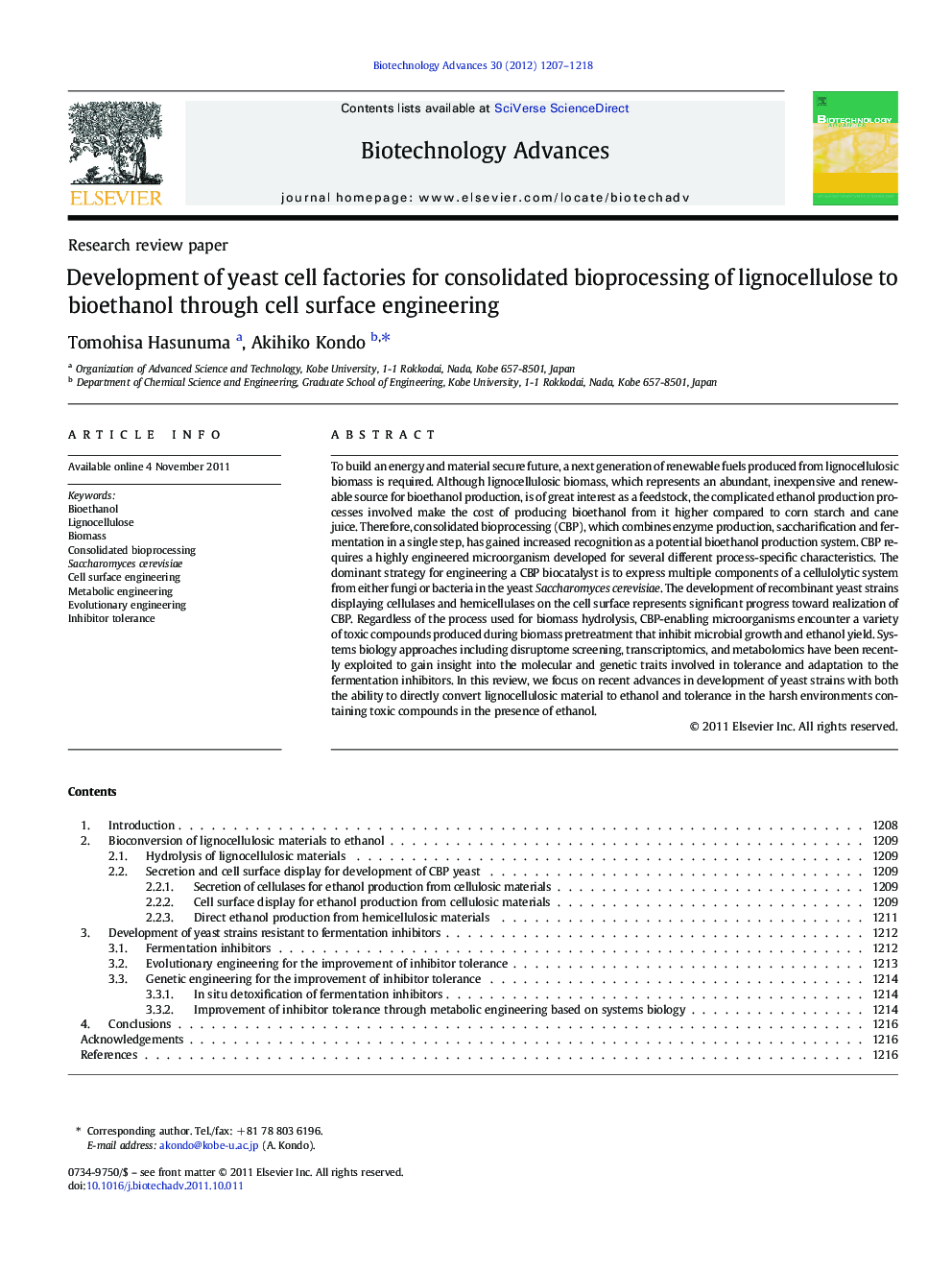| کد مقاله | کد نشریه | سال انتشار | مقاله انگلیسی | نسخه تمام متن |
|---|---|---|---|---|
| 6486714 | 1222 | 2012 | 12 صفحه PDF | دانلود رایگان |
عنوان انگلیسی مقاله ISI
Development of yeast cell factories for consolidated bioprocessing of lignocellulose to bioethanol through cell surface engineering
دانلود مقاله + سفارش ترجمه
دانلود مقاله ISI انگلیسی
رایگان برای ایرانیان
کلمات کلیدی
Bioethanol - بیواتانولInhibitor tolerance - تحمل مهلکBiomass - زیست توده یا بیومسSaccharomyces cerevisiae - ساکارومایسس سرویزیهEvolutionary engineering - مهندسی تکاملیCell surface engineering - مهندسی سطح سلولMetabolic engineering - مهندسی متابولیکLignocellulose - مواد لیگنوسلولزیConsolidated bioprocessing - پردازش زیستی متمرکز
موضوعات مرتبط
مهندسی و علوم پایه
مهندسی شیمی
بیو مهندسی (مهندسی زیستی)
پیش نمایش صفحه اول مقاله

چکیده انگلیسی
To build an energy and material secure future, a next generation of renewable fuels produced from lignocellulosic biomass is required. Although lignocellulosic biomass, which represents an abundant, inexpensive and renewable source for bioethanol production, is of great interest as a feedstock, the complicated ethanol production processes involved make the cost of producing bioethanol from it higher compared to corn starch and cane juice. Therefore, consolidated bioprocessing (CBP), which combines enzyme production, saccharification and fermentation in a single step, has gained increased recognition as a potential bioethanol production system. CBP requires a highly engineered microorganism developed for several different process-specific characteristics. The dominant strategy for engineering a CBP biocatalyst is to express multiple components of a cellulolytic system from either fungi or bacteria in the yeast Saccharomyces cerevisiae. The development of recombinant yeast strains displaying cellulases and hemicellulases on the cell surface represents significant progress toward realization of CBP. Regardless of the process used for biomass hydrolysis, CBP-enabling microorganisms encounter a variety of toxic compounds produced during biomass pretreatment that inhibit microbial growth and ethanol yield. Systems biology approaches including disruptome screening, transcriptomics, and metabolomics have been recently exploited to gain insight into the molecular and genetic traits involved in tolerance and adaptation to the fermentation inhibitors. In this review, we focus on recent advances in development of yeast strains with both the ability to directly convert lignocellulosic material to ethanol and tolerance in the harsh environments containing toxic compounds in the presence of ethanol.
ناشر
Database: Elsevier - ScienceDirect (ساینس دایرکت)
Journal: Biotechnology Advances - Volume 30, Issue 6, NovemberâDecember 2012, Pages 1207-1218
Journal: Biotechnology Advances - Volume 30, Issue 6, NovemberâDecember 2012, Pages 1207-1218
نویسندگان
Tomohisa Hasunuma, Akihiko Kondo,